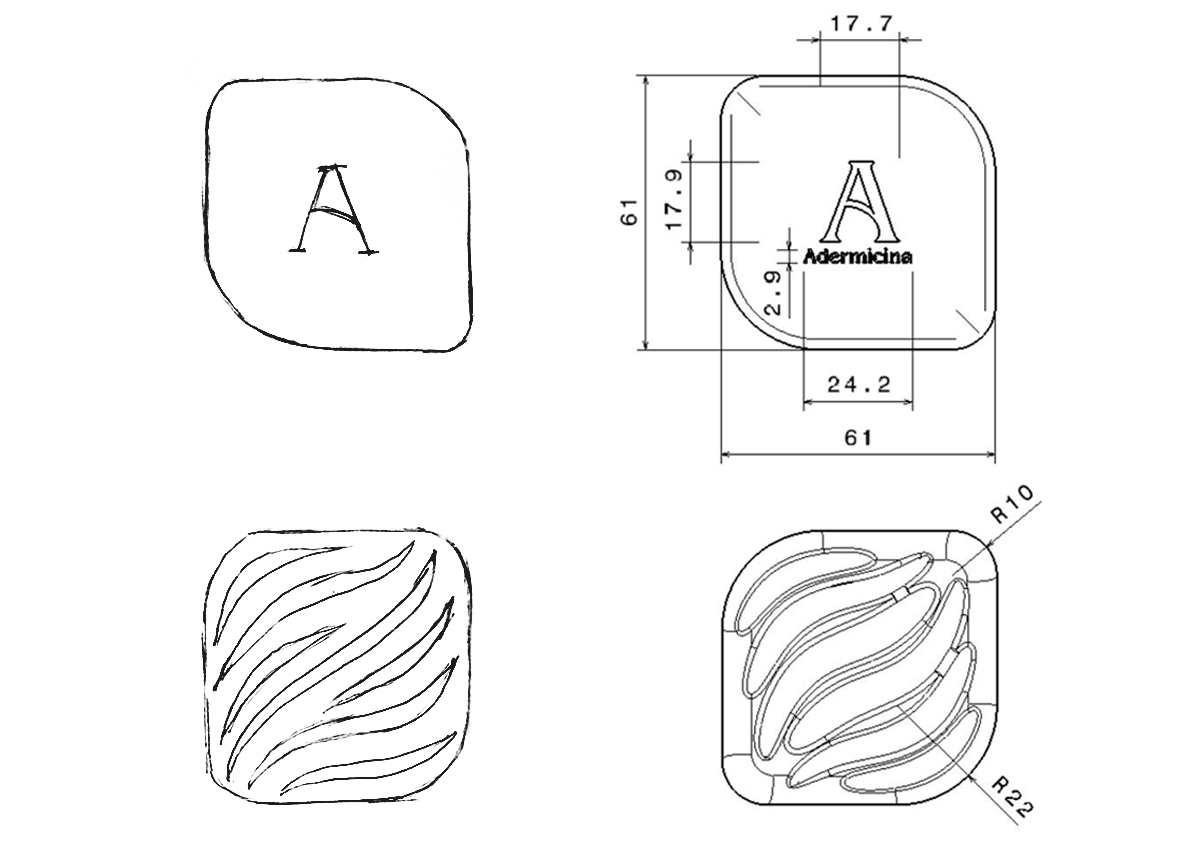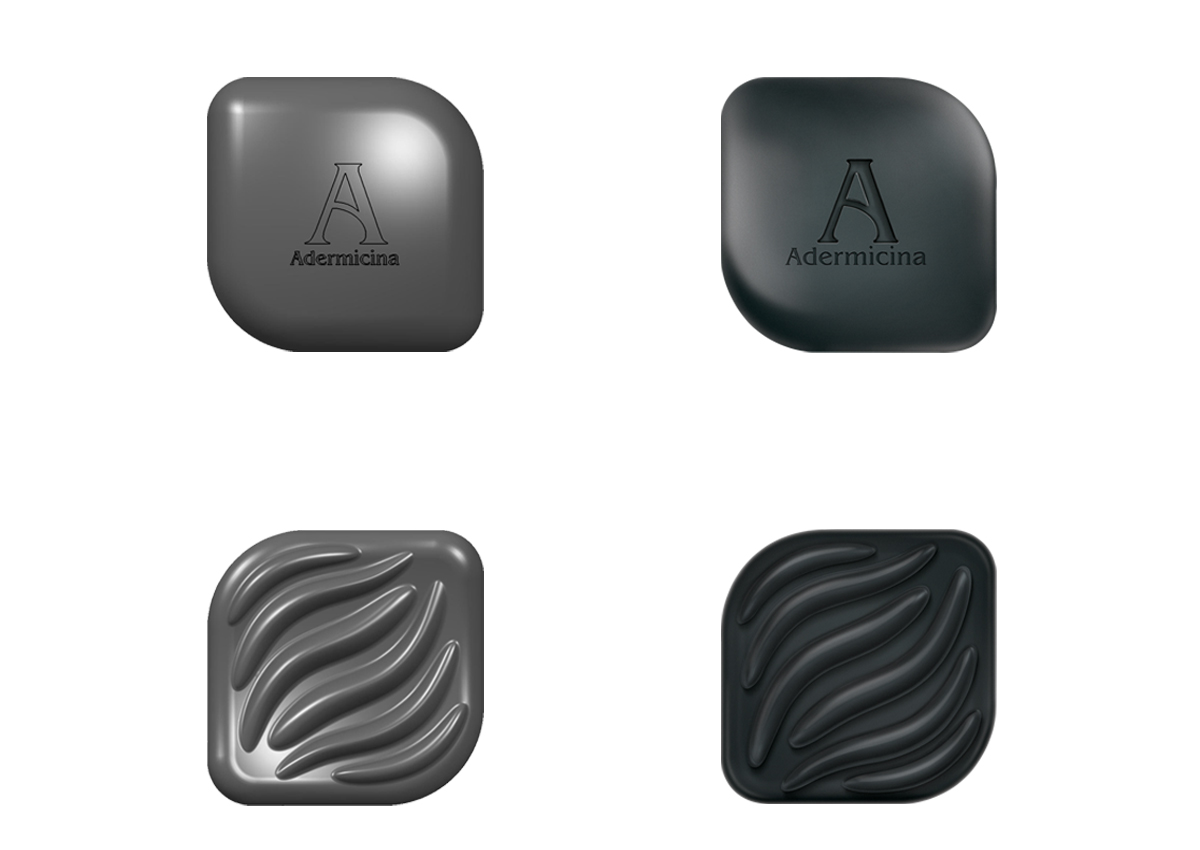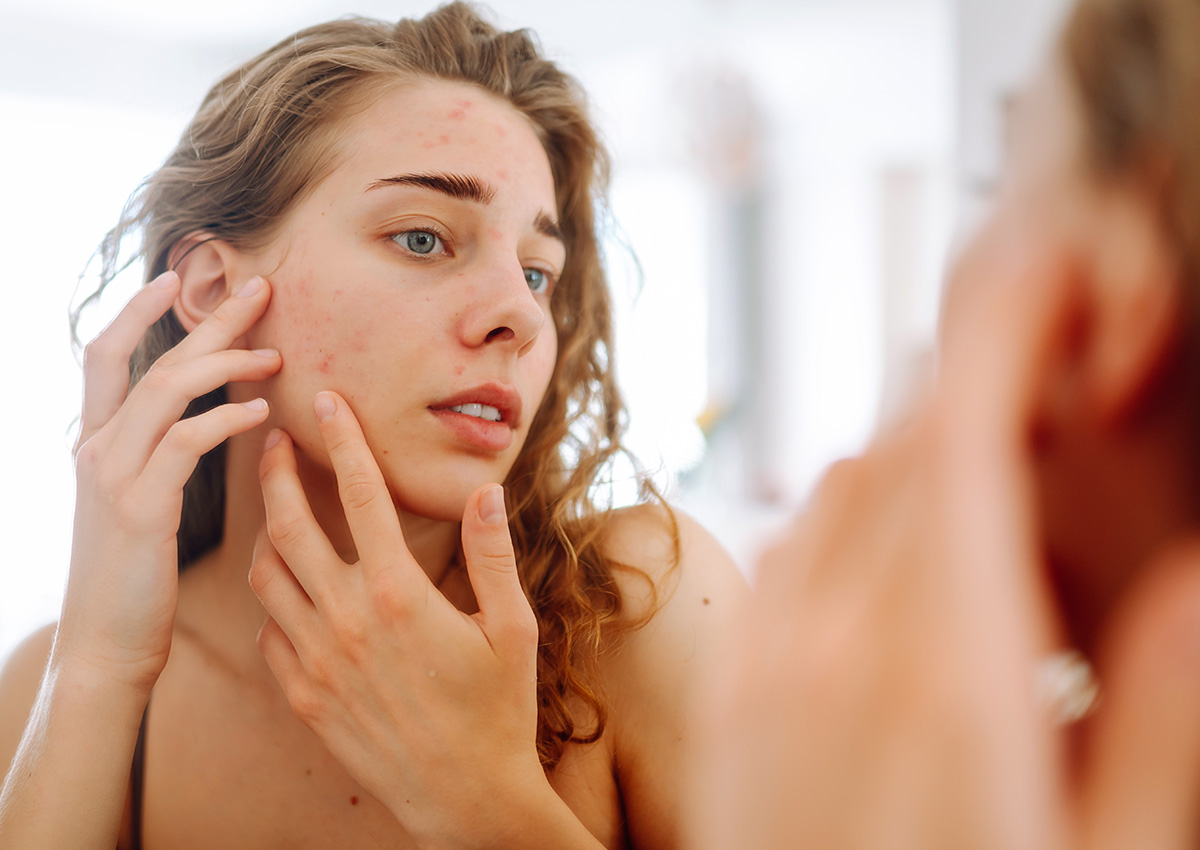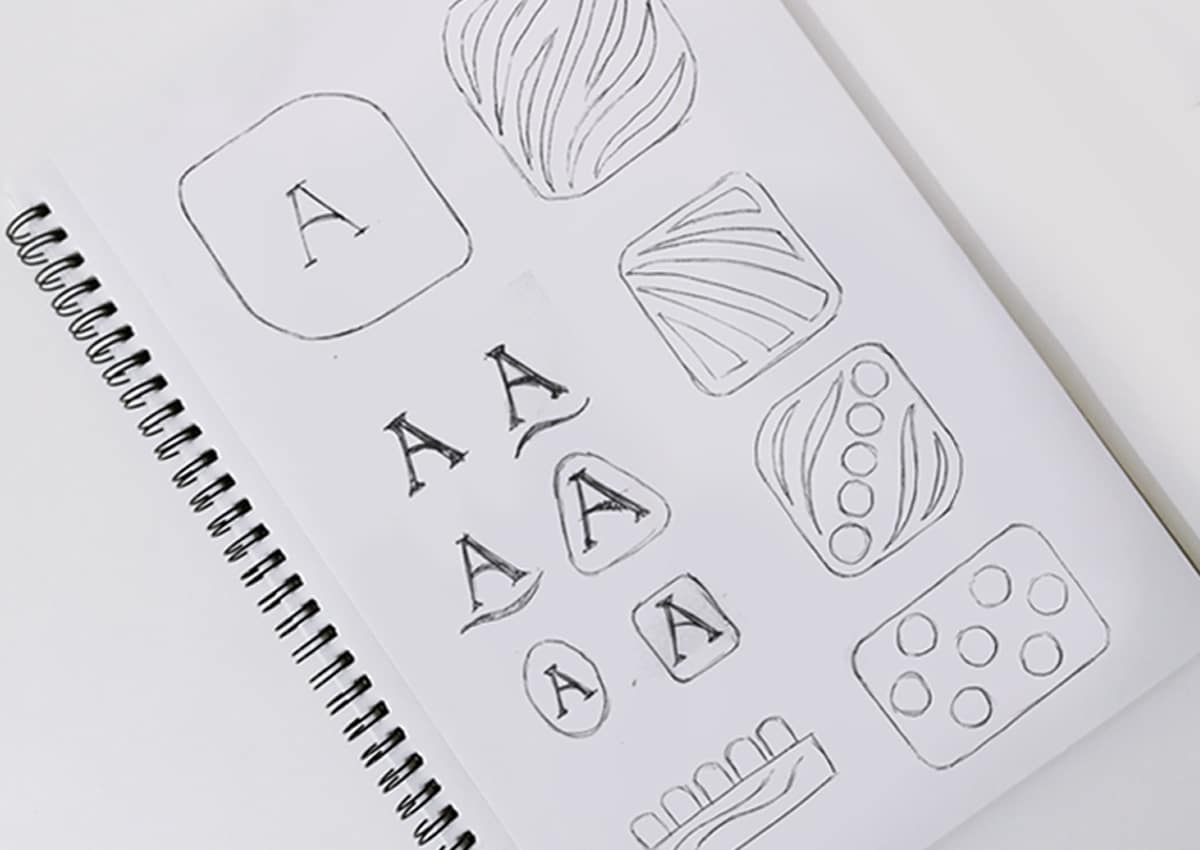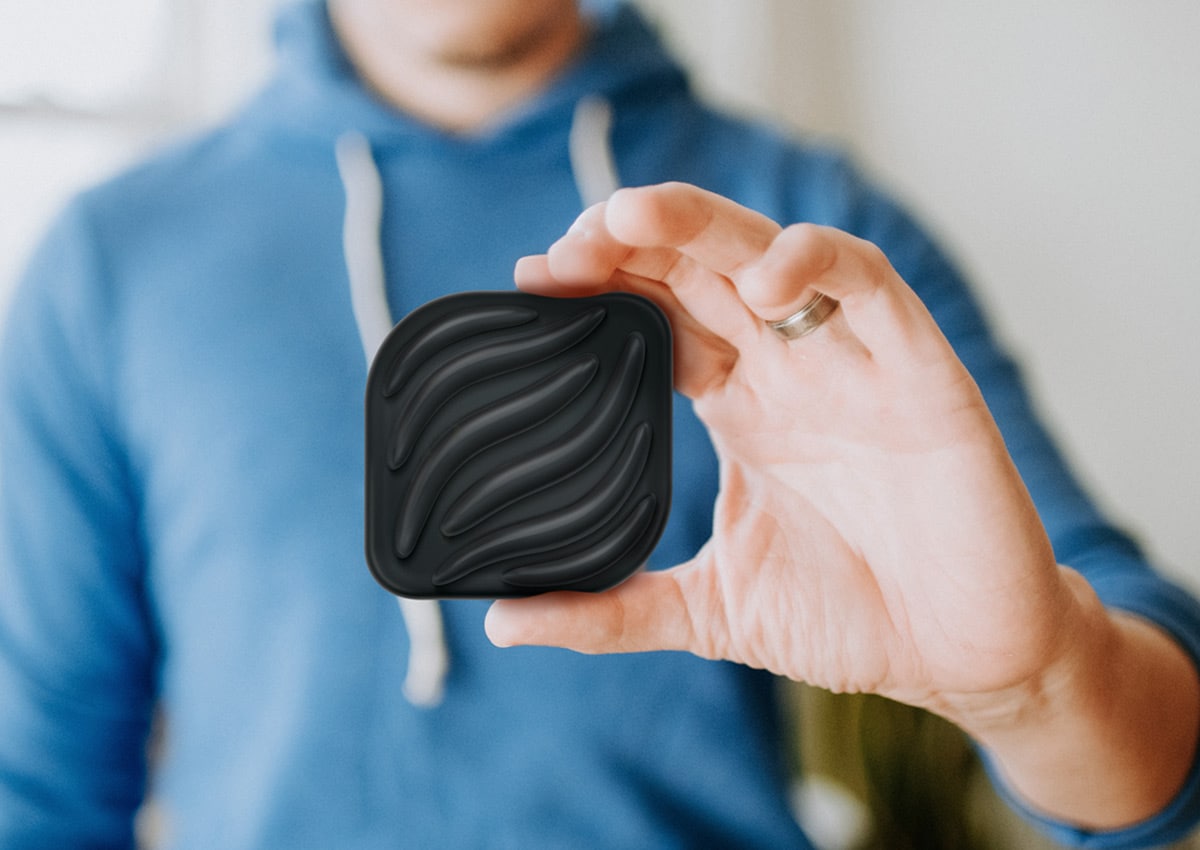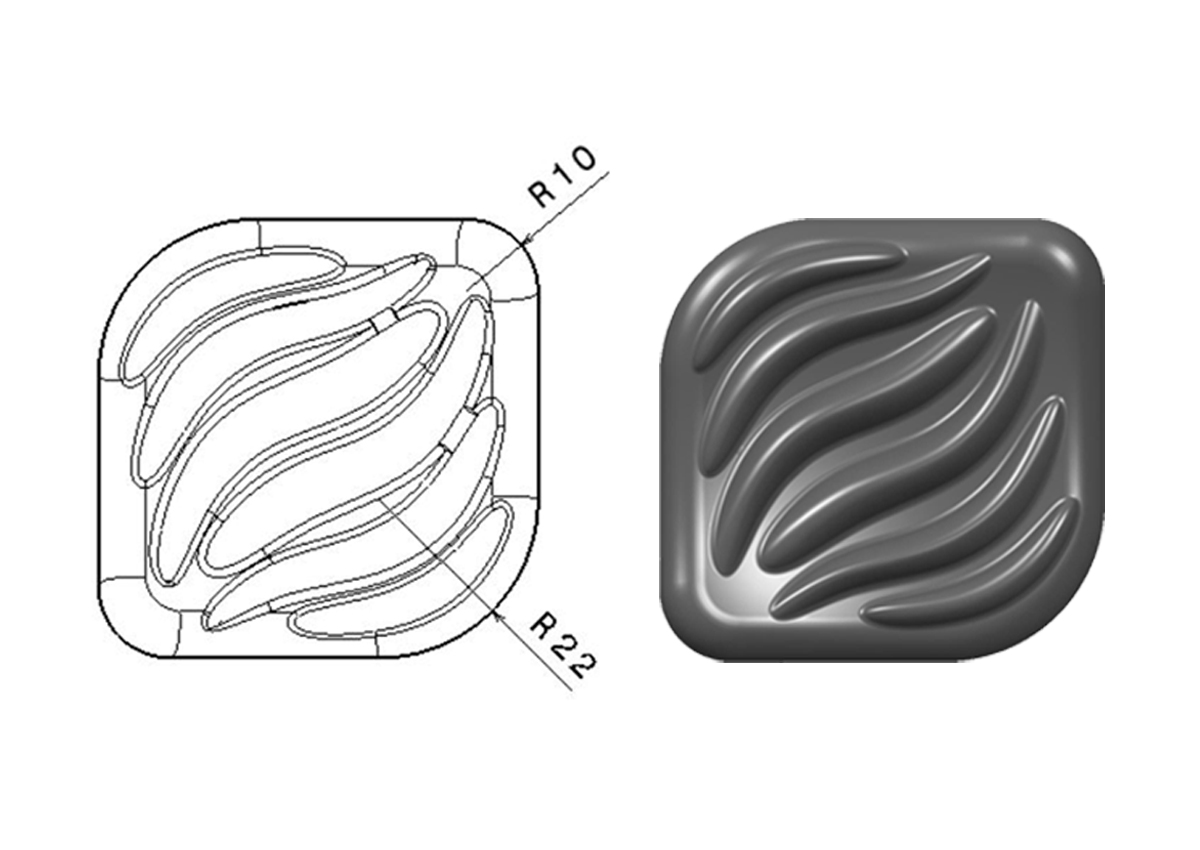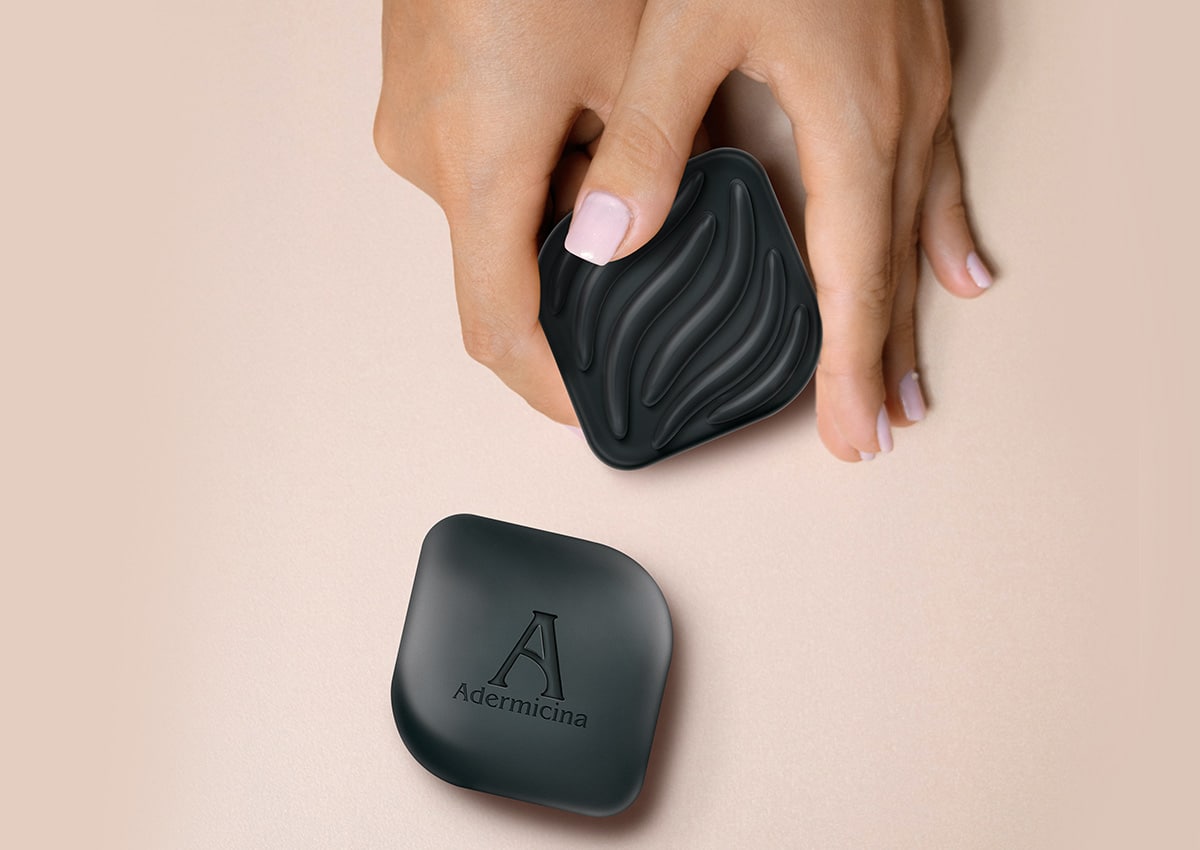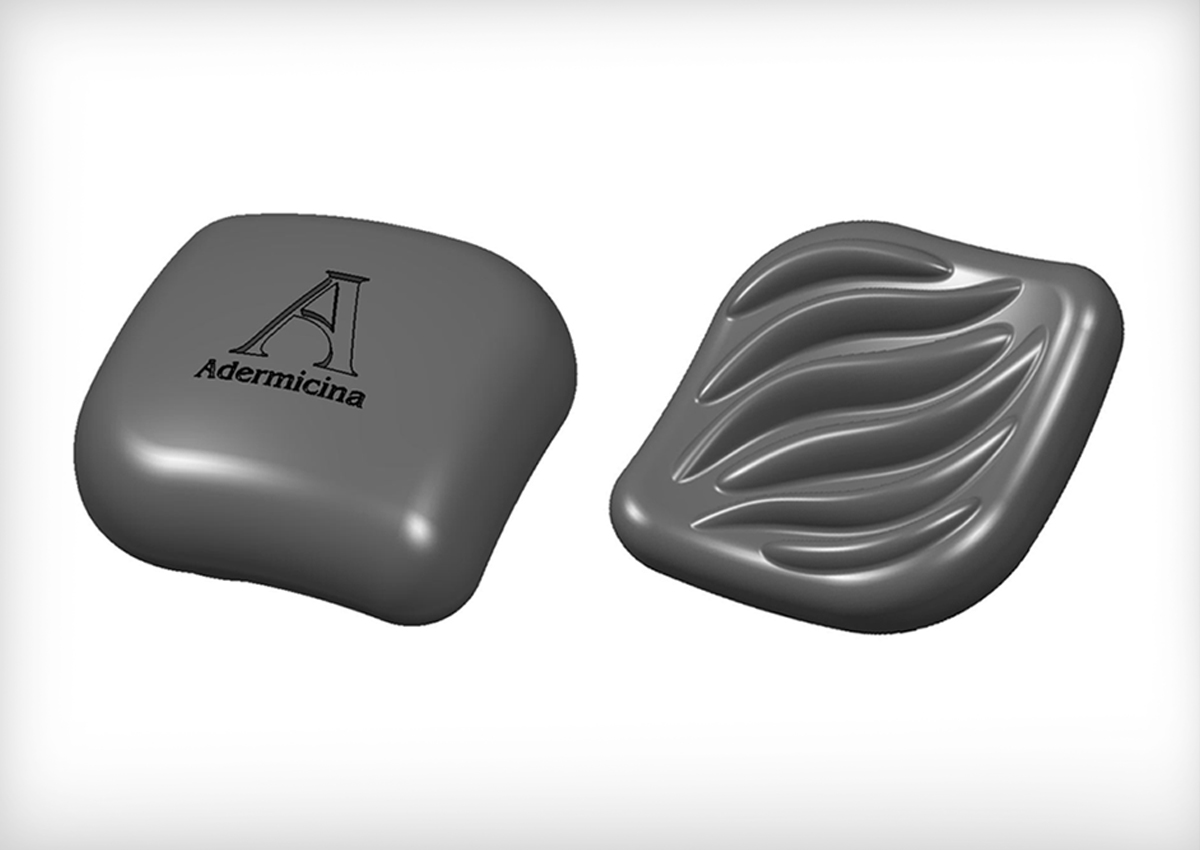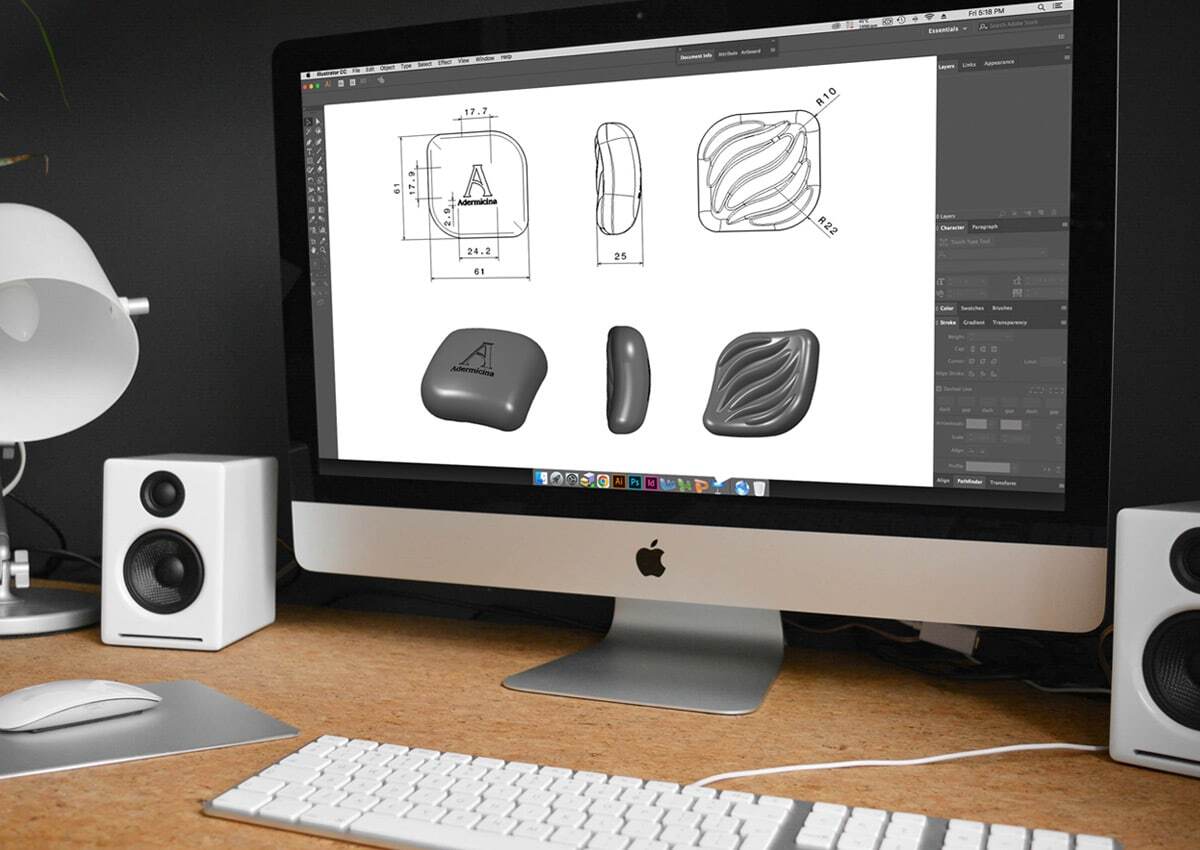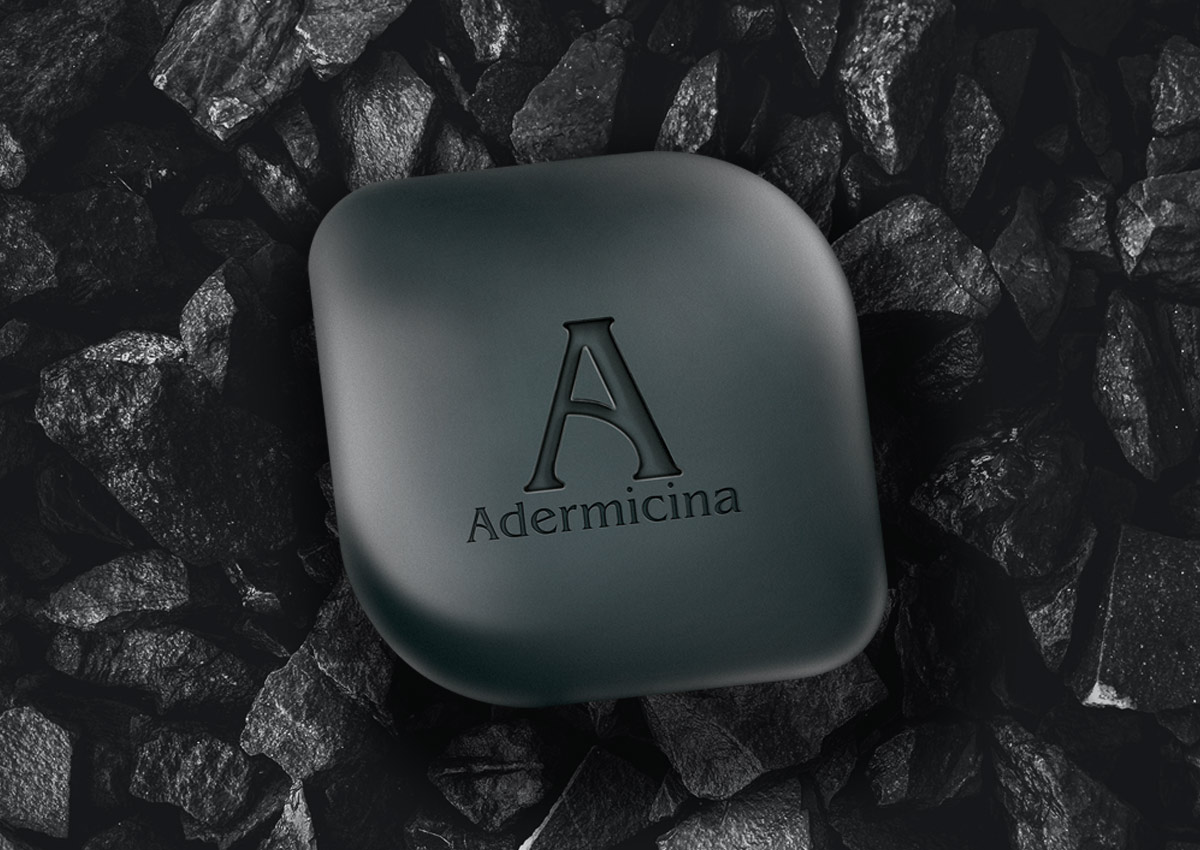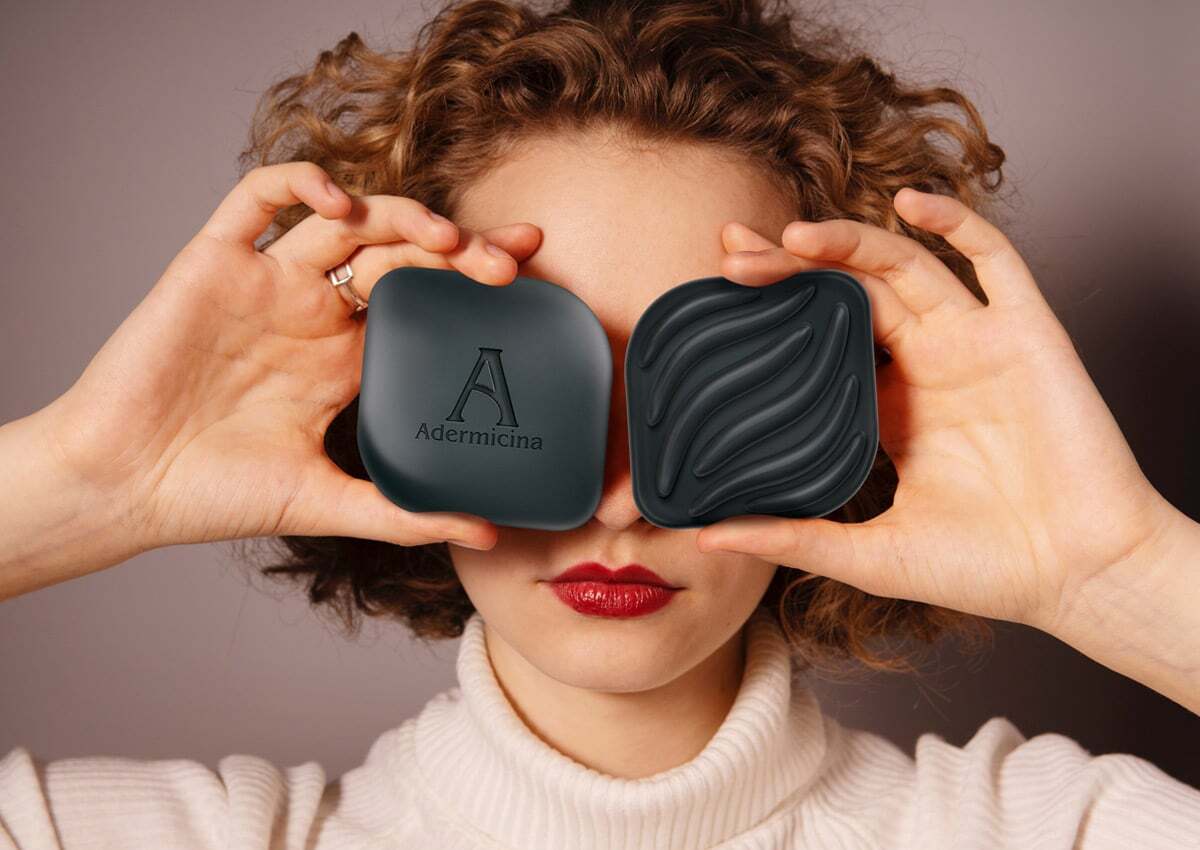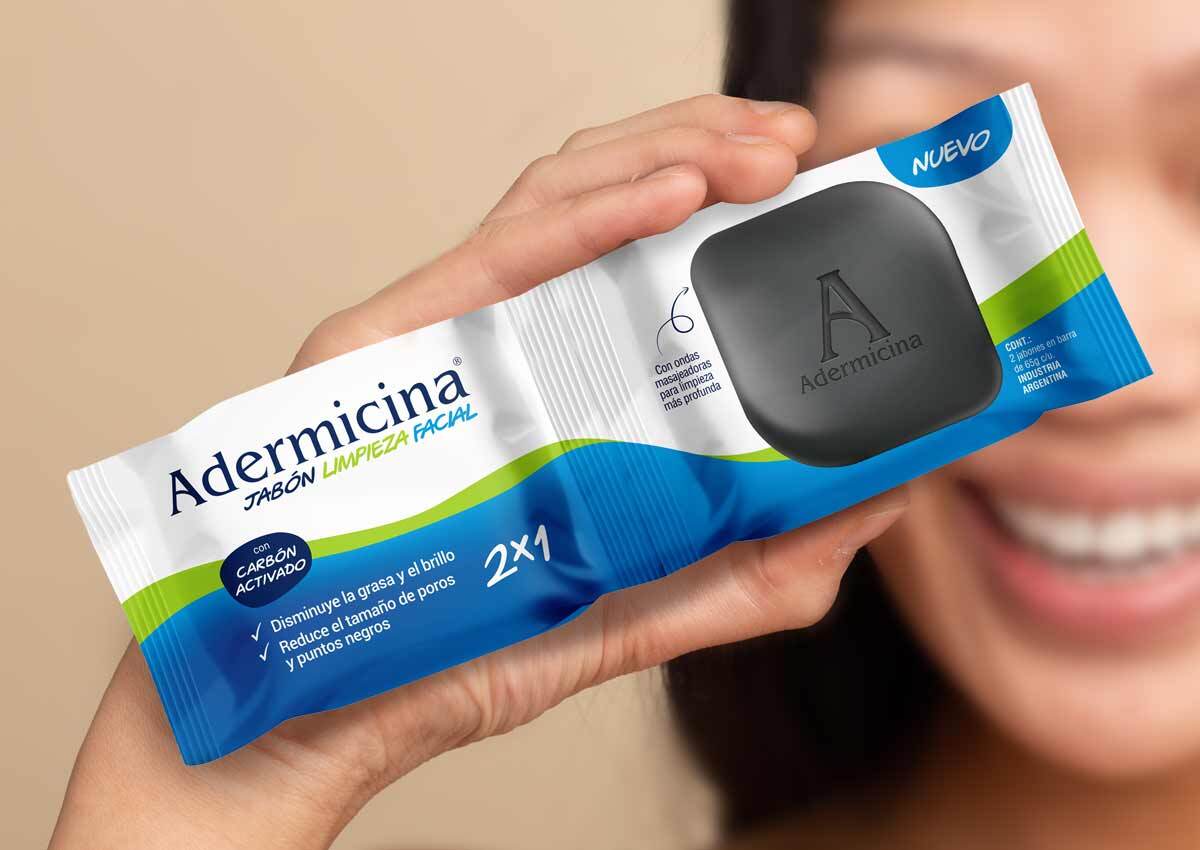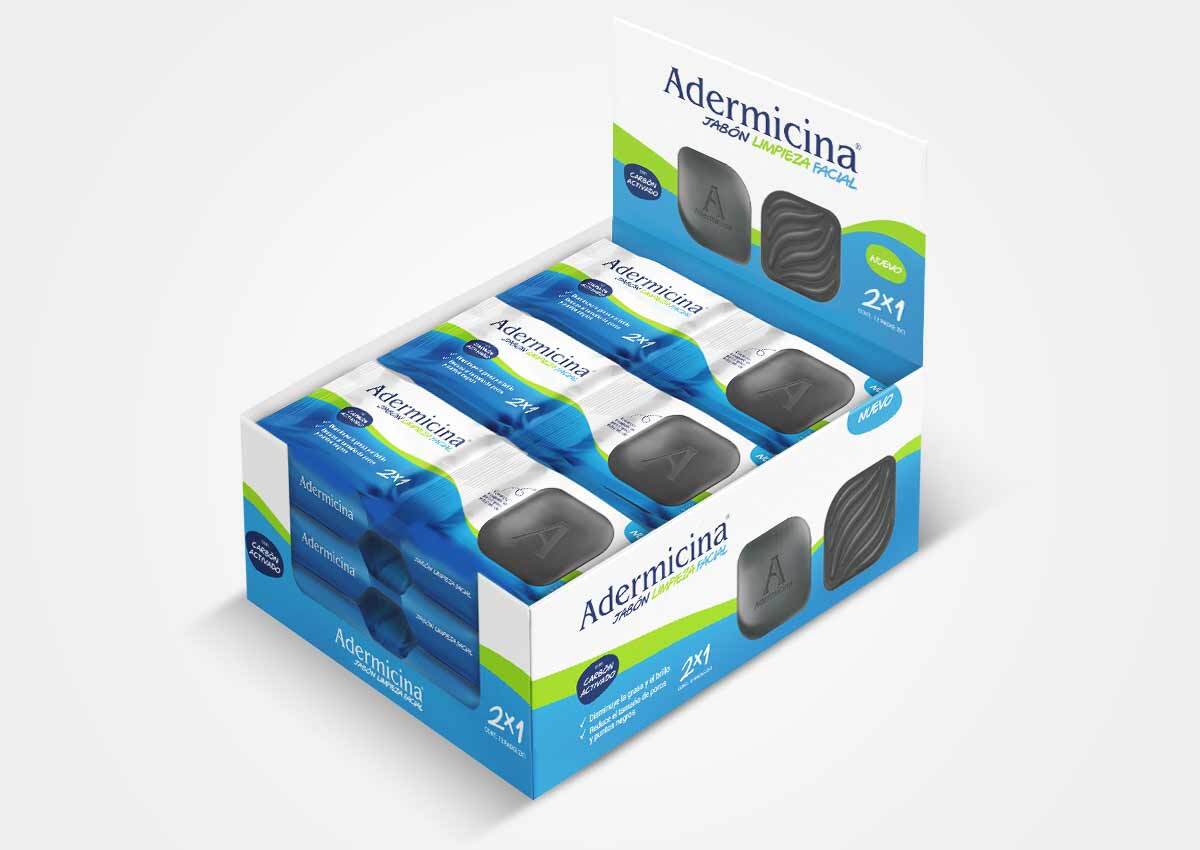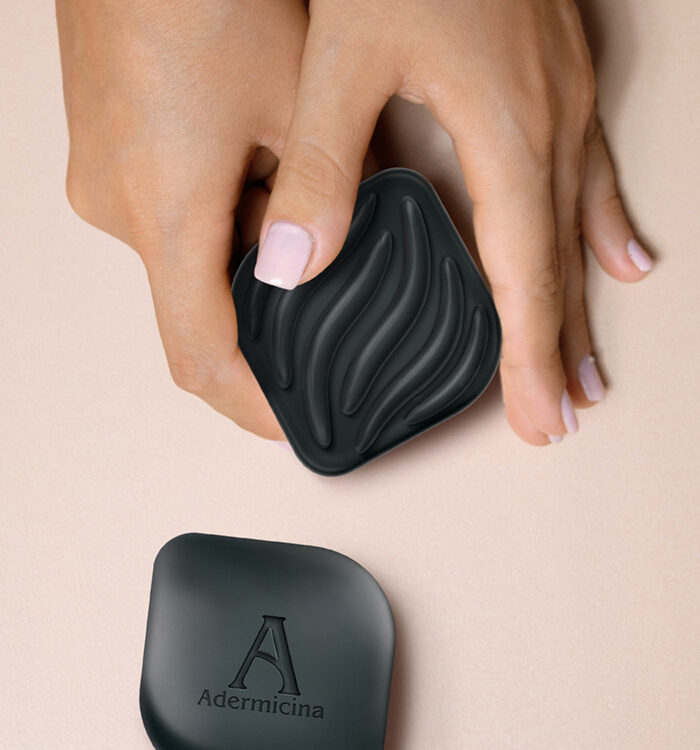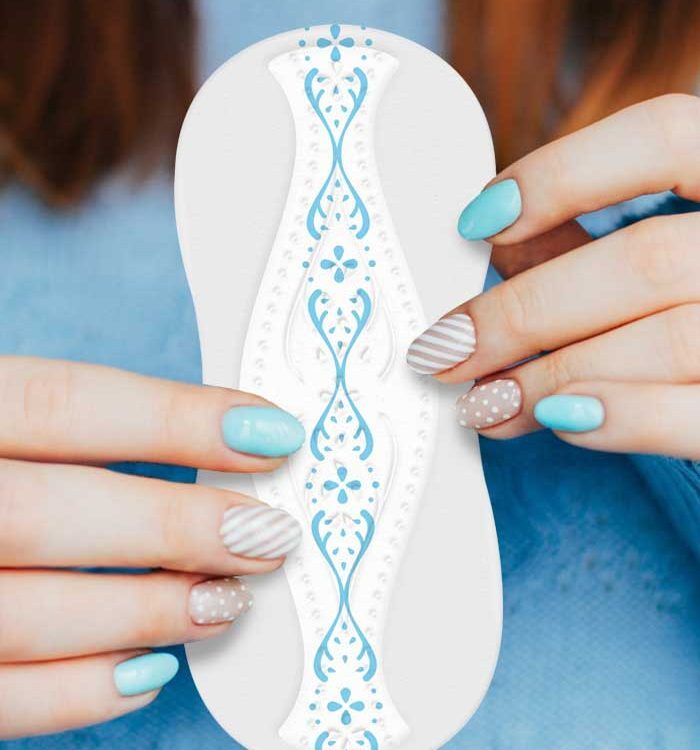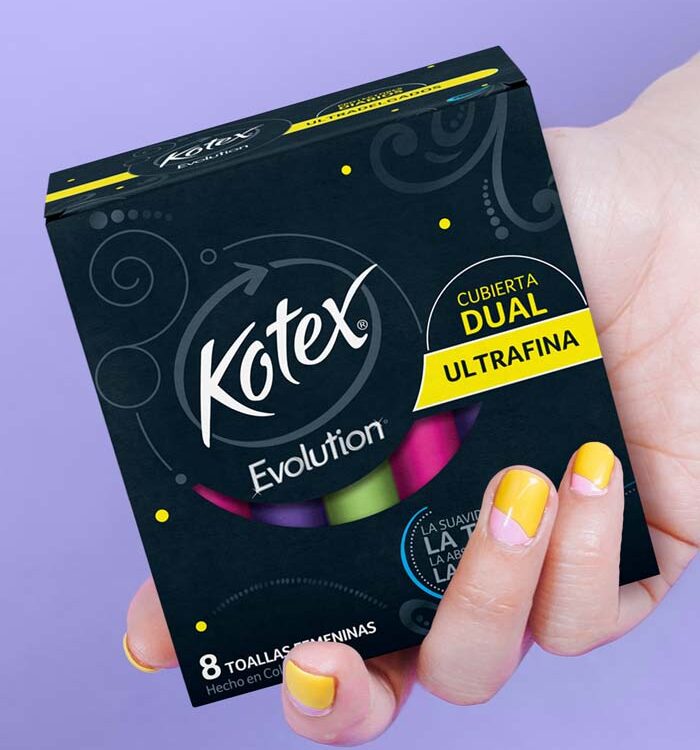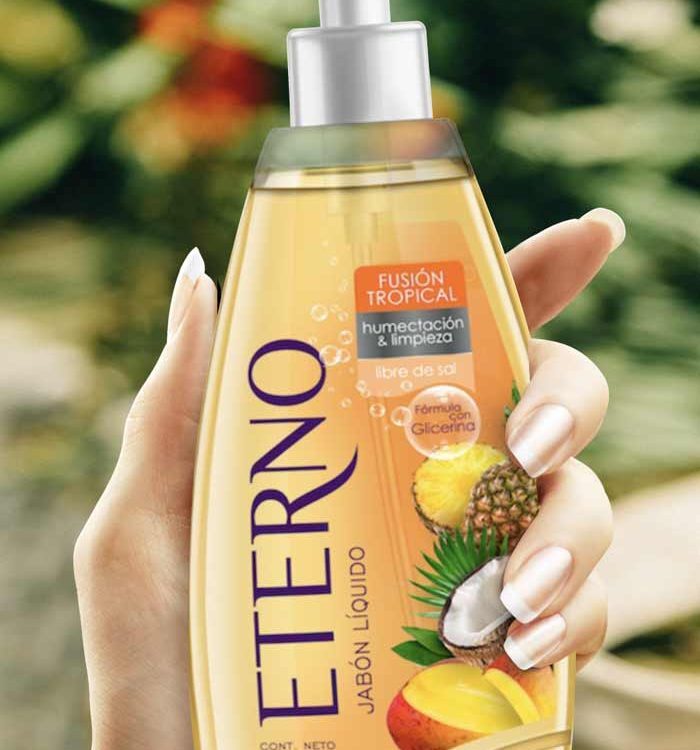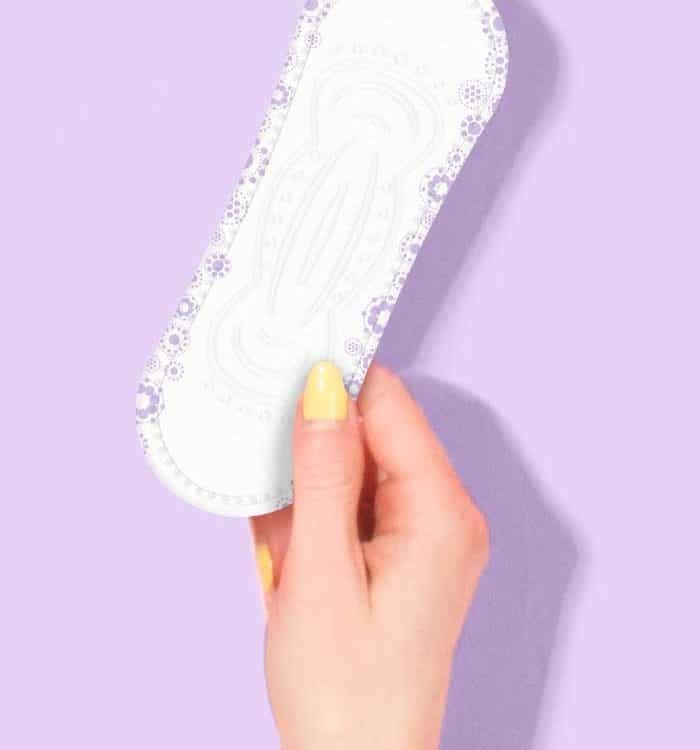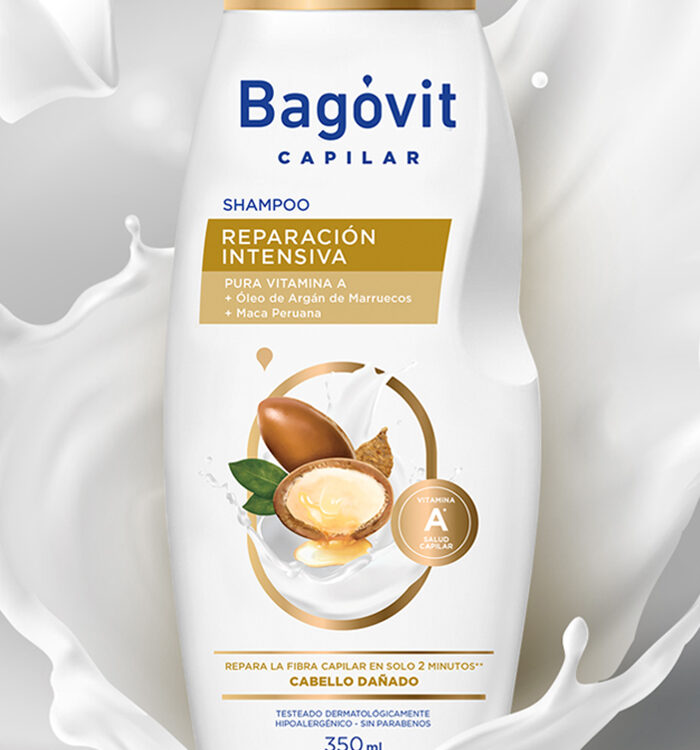Adermicina Bar Soap Design
Case Study
![]()
Adermicina is a well-known personal care brand, specializing in skin care products designed to treat and protect the skin. Its offerings typically include different products formulated to address a variety of skin issues. Known for its gentle yet effective formulations, Adermicina products often incorporate moisturizing and protective ingredients, making them popular for sensitive skin and for maintaining skin health.
The Adermicina anti-acne bar soap is a thoughtfully designed skincare product with both functional and aesthetic features aimed at enhancing the skincare routine. Formulated with activated charcoal, the bar soap boasts a rich, characteristic black color that signifies its purifying and detoxifying qualities. The activated charcoal helps to deeply cleanse pores, absorb excess oil, and reduce impurities, making it especially suitable for acne-prone skin.
Design Features
- Dual-Textured Surface: The bar soap is crafted with a unique dual surface. The back features massaging waves that provide a gentle yet effective exfoliating action. This textured surface is designed to enhance circulation and promote a deeper clean, making it ideal for treating areas prone to breakouts.
- Smooth Side for Gentle Treatment: The opposite side of the bar soap is smooth, allowing for a gentler treatment. This design provides versatility for users to tailor their experience, depending on the skin's needs or sensitivity.
- Rounded Edges: The bar has softly rounded edges, giving it a comfortable grip and an inviting, sophisticated look. This shape makes it easy to hold and maneuver while providing a smooth and soft appeal.
- Embossed Branding: The Adermicina logo is embossed on the smooth side, lending a subtle yet effective branding touch that also communicates quality and reliability.
This bar soap’s combination of activated charcoal, dual textures, and thoughtful design elements makes it a versatile tool for both cleansing and massaging, promoting clearer, healthier-looking skin while providing a premium user experience.
Market Research & Concept Development
- Market Analysis: Begin by researching similar bar soap products in the personal care industry, with a focus on anti-acne treatments and dual-texture designs. Assess competitor designs, market trends, and consumer preferences, including factors such as ergonomics, ease of use, and sustainability considerations.
- User Needs & Brand Alignment: Identify specific user needs for bar soaps, such as easy handling in the shower, effective cleansing, and gentle exfoliation. Ensure the design aligns with the brand’s aesthetics and values, emphasizing aspects like purity, dermatological care, and eco-friendly materials if sustainability is a priority.
Initial Sketching & Ideation
- Sketches and Conceptualization: Start by sketching ideas for a bar soap shape that balances functionality and user comfort. Experiment with dual-sided designs that incorporate both a smooth surface and massaging waves for a versatile cleansing experience.
- Design for Differentiation: Consider ways to visually and tactically differentiate the soap’s dual functions. For example, incorporate massaging waves on one side and a smooth, embossed surface on the other, allowing users to easily identify and utilize each side according to their skincare needs.
2D Modeling & Preliminary Sizing
- Proportional Balance and Ergonomics: In the initial 2D modeling phase, we carefully balanced aesthetic appeal with ergonomic requirements to create a bar soap that offers a comfortable grip and intuitive handling. Every curve and edge was crafted to optimize both the visual and functional experience, providing ease of use in wet conditions and enhancing the soap’s appeal.
- Technical Constraints: Important technical factors, such as embossing, transport, and packaging limitations, were considered to ensure structural integrity and compatibility with manufacturing processes. These constraints guided the design to support an efficient production flow while preserving the quality of the soap’s form and features.
- Blueprint Creation: From the 2D design, we developed detailed preliminary blueprints that defined dimensions and other essential specifications. These initial blueprints served as a foundation for the next stages, providing a comprehensive visual and technical guide for further refinement and prototyping.
3D Modeling & Rendering
- Detailed CAD Modeling: The bar soap design was translated into precise 3D CAD models, emphasizing accurate volume, shape, and textural details to enhance functionality while minimizing potential production issues.
- Rendering for Visualization: High-quality renderings provided photorealistic previews, enabling stakeholders to visualize the soap’s final look, including the massaging waves, smooth surface, and embossed logo. These visuals helped inform decisions on any needed adjustments.
- Rapid Prototyping & Refinement: Initial 3D-printed prototypes allowed for hands-on evaluation, focusing on how users hold and use the soap, especially under wet conditions. This interaction helped refine ergonomics, enhancing user comfort and ease of use.
- Collaboration with Soap Manufacturer and Technical Team: Continuous collaboration with the manufacturer and technical team ensured alignment with production constraints, including any limitations in embossing or packaging, confirming that the design met all practical requirements for seamless manufacturing.
Design Finalization
- Final Modeling: To optimize user experience, we refined the design to meet precise volume specifications and other requirements, incorporating feedback from discussions with the soap manufacturer and technical team.
- Production Optimization: Close collaboration with the manufacturer allowed us to finalize the mold design, ensuring that the soap’s dual-texture features—such as the massaging waves and smooth surface—could be produced efficiently while meeting all technical constraints.
- Mold Development: Once the design was approved, molds were created for soap production, engineered to maintain consistent form, precise detailing, and a smooth, high-quality finish on all surfaces.
- Approval of Trial Molds and Final Mold Production: After the trial molds met all design and functional standards without requiring adjustments, the molds were duplicated to create the full set of cavities needed for large-scale production, ensuring quality and consistency in each bar.
Packaging Design
Adermicina’s branding emphasizes its medicinal and dermatologically supportive qualities, positioning the brand as a go-to for skin health maintenance. The packaging reflects a clinical and approachable look, reinforcing trust and reliability among users who seek both preventive care and targeted relief for skin concerns.
We developed the packaging for Adermicina's innovative anti-acne facial cleansing soap, maintaining the brand’s recognizable codes to ensure instant recognition. This attention to Adermicina's established identity guarantees that the product feels authentically connected to the brand while introducing a fresh, visually compelling design.
The project began with the creation of the bar soap itself, designed specifically for acne treatment with a unique dual-sided form. The packaging was crafted to communicate the soap’s specialized benefits clearly and quickly, highlighting how it purifies and improves skin health. The design prioritizes a visually appealing presentation, capturing attention with a clean layout that speaks to the soap’s premium qualities.
The soap box doubles as a counter-tray, designed with a minimalist aesthetic that provides a refined, sophisticated backdrop for the product. When displayed, the box serves as an elegant, organized presentation, showcasing each soap bar in a way that invites customers to learn more about the product and its benefits. This thoughtful combination of packaging elements creates an eye-catching display that enhances both brand presence and product allure.



